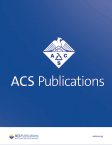摘要 PO1-09-12:巴西在公立或私立医疗机构接受治疗的早期雌激素受体阳性(ER+)乳腺癌患者的癌症健康差异
IF 3.4
Q2 PUBLIC, ENVIRONMENTAL & OCCUPATIONAL HEALTH
引用次数: 0
摘要
背景 巴西的癌症登记处很不完善,有关患者概况和癌症治疗模式的数据也很少。此外,虽然 30% 的人口可以享受私人保险,但近 70% 的人口使用公共医疗服务。这项研究旨在描述巴西不同地区早期ER+乳腺癌妇女接受ET辅助治疗的社会人口学和临床病理学特征,并根据公立和私立机构的情况描述该疾病的治疗模式。研究方法:我们对巴西不同地区的机构进行了真实世界数据分析。巴西四个不同地区的 12 个中心邀请了接受辅助内分泌治疗至少 6 个月的早期ER+浸润性乳腺癌妇女参与这项研究。研究人员从医疗记录中获取了人口统计学和临床病理学信息。为了比较医疗保险类型,我们将在巴西公共医疗系统下接受治疗的患者视为公共保险患者,而将拥有私人保险或自费接受治疗的女性视为私人保险患者。高中毕业即为高学历。数据收集采用 RedCap 软件。组间定性变量的比较采用卡方检验或精确卡方检验,定量变量的比较采用非参数曼-惠特尼检验。P<0.05为差异显著。分析在 SAS 9.4 中进行;结果:从 2021 年 6 月到 2023 年 5 月,共有 461 名患有 ER+、早期 BC 的女性被纳入本次分析。共有 233 人(50.6%)来自私立机构,平均年龄为 56.02 岁(22-93 岁不等),47.69% 为非白人,61.3% 为绝经后女性,61.7% 与伴侣同居,76.2% 接受过高等教育,66.81% 有合并症。在所有病例中,21.26%、43.17% 和 35.57% 的患者在确诊时的肿瘤分期分别为 III、II 和 I 期。在接受的治疗方面,62.4%的患者接受了肿块切除术,32.2%的患者进行了腋窝清扫术,67.6%的患者接受了(新)辅助化疗,45.2%的患者服用了芳香化酶抑制剂,14.19%的患者服用了卵巢功能抑制剂加ET。使用 ET 的中位时间为 2.78 年(6 个月至 9.61 年不等)。公共医疗保险与以下因素明显相关:确诊时年龄较小(小于 60 岁)、绝经前状态、独居、教育水平较低、肿瘤较晚期、既往接受过乳房切除术、既往接受过腋窝切除术、既往接受过新辅助化疗、既往接受过放疗、芳香化酶抑制剂、卵巢功能抑制剂加 ET 和 CDK4/6 抑制剂的使用率较低,而同时使用的药物较多。结论研究显示,在巴西,在私立与公立医疗机构接受治疗的早期ER+乳腺癌妇女在健康方面存在明显差异。重要的是,尽管晚期肿瘤更多,但在公立机构接受卵巢抑制剂、CDK4/6 抑制剂治疗的女性更少,而且接受的手术治疗更具侵略性。政府、立法者、医疗服务提供者和患者应展开深入讨论,努力缩小上述差距。巴西雌激素受体阳性乳腺癌患者在接受辅助治疗时的特征和治疗模式(根据医疗保险) ALND:腋窝淋巴结清扫术;CDK4/6i:CDK4/6抑制剂;ELISA:ELISA抑制剂:CDK4/6i:CDK4/6抑制剂;ET:内分泌治疗;OS:卵巢抑制。引用格式:Romualdo Barroso-Sousa、Daniele Assad-Suzuki、Danielle Santos、Fernanda Moura、Sulene Oliveira、Anna Luiza Galvão、Bruno Souza、Amanda Castro、Monalisa Andrade、Andrea Shimada、Yuri Beckedorff、Maria Cristina Magalhães、Cristiano Souza、Carlos Paiva、Heloísa Resende、Daniela Pereira、Angelica Rodrigues、Daniela Rosa。巴西在公立或私立医院接受治疗的早期雌激素受体阳性(ER+)乳腺癌患者的癌症健康差异[摘要]。In:2023 年圣安东尼奥乳腺癌研讨会论文集;2023 年 12 月 5-9 日;德克萨斯州圣安东尼奥。费城(宾夕法尼亚州):AACR; Cancer Res 2024;84(9 Suppl):Abstract nr PO1-09-12。本文章由计算机程序翻译,如有差异,请以英文原文为准。
Abstract PO1-09-12: Cancer health disparities among patients with early-stage estrogen receptor-positive (ER+) breast cancer treated in public or private practices in Brazil
Background Cancer registries in Brazil are deficient and data about patients’ profiles and cancer treatment patterns are scarce in the country. Moreover, while 30% of population has access to private insurance, almost 70% of population uses publicly health services. The objective of this work was to describe the sociodemographic and clinicopathological characteristics of women with early-stage ER+ breast cancer on adjuvant ET in different regions of Brazil, and to describe treatment patterns for this disease according public and private institutions. Methodology: We performed a real-world data analysis in different institution regions of Brazil. Women with a history of early-stage ER+ invasive carcinoma of the breast on adjuvant endocrine therapy for at least 6 months were invited to participate of this study in 12 centers in four different regions in Brazil. Demographic and clinicopathologic information was retrieved from medical records. In order to compare healthcare insurance type, we considered patients who were treated under the Brazilian public health system as publicly insured, and women who had private insurance or paid for their treatment as privately insured. High education level was defined by completed high school. Data collection was done with RedCap software. Qualitative variables were compared between groups using the Chi-square or exact Chi-square test and for quantitative variables the non-parametric Mann-Whitney test was used. P < 0.05 was considered significant. Analyzes were performed in SAS 9.4; Results: From June 2021 to May 2023, a total of 461 women with ER+, early BC, were included in this analysis. A total of 233 (50.6%) came from private institutions, the mean age was 56.02 years (range 22-93), 47.69% were non-white, 61.3% were post-menopause, 61.7% lived with a partner, and 76.2% were highly educated and 66.81% had comorbidities. Tumor staging at diagnosis was classified as III, II and I respectively in 21.26%, 43.17% and 35.57% of all cases. Regarding treatment received, 62.4% of patients underwent lumpectomy, 32.2% had axillary dissection, 67.6% received (neo)adjuvant chemotherapy, 45.2% were on aromatase inhibitors and 14.19% were on ovarian function suppression plus ET . Median duration of ET use was 2.78 years (range 6 months- 9.61 years). Publicly health insurance was associated significantly associated with younger age at diagnosis (< 60 yo), premenopausal status, to live alone, lower educational level, more advanced tumors, prior mastectomy, prior axillary dissection, prior neo-adjuvant chemotherapy, prior radiotherapy, lower use of aromatase inhibitors, ovarian function suppression plus ET, and CDK4/6 inhibitors, while higher use of concomitant medications. Conclusion: The study shows significant health disparities among women with early-stage ER+ breast cancer treated in private versus public institutions in Brazil. Importantly, despite having more advanced tumors, women in public institution had less access to ovarian suppression, CDK4/6 inhibitors and were treated with more aggressive surgical procedures. A deep discussion involving government, lawmakers, health care providers and patients should be conducted to try to decrease the described disparities.
Patient’s characteristic and patterns of treatment among patients with estrogen receptor-positive breast cancer on adjuvant therapy according to health insurance in Brazil
ALND: axillary lymph node dissection; CDK4/6i: CDK4/6 inhibitors; ET: endocrine therapy; OS: ovary suppression.
Citation Format: Romualdo Barroso-Sousa, Daniele Assad-Suzuki, Danielle Santos, Fernanda Moura, Sulene Oliveira, Anna Luiza Galvão, Bruno Souza, Amanda Castro, Monalisa Andrade, Andrea Shimada, Yuri Beckedorff, Maria Cristina Magalhães, Cristiano Souza, Carlos Paiva, Heloísa Resende, Daniela Pereira, Angelica Rodrigues, Daniela Rosa. Cancer health disparities among patients with early-stage estrogen receptor-positive (ER+) breast cancer treated in public or private practices in Brazil [abstract]. In: Proceedings of the 2023 San Antonio Breast Cancer Symposium; 2023 Dec 5-9; San Antonio, TX. Philadelphia (PA): AACR; Cancer Res 2024;84(9 Suppl):Abstract nr PO1-09-12.
求助全文
通过发布文献求助,成功后即可免费获取论文全文。
去求助
来源期刊

ACS Chemical Health & Safety
PUBLIC, ENVIRONMENTAL & OCCUPATIONAL HEALTH-
CiteScore
3.10
自引率
20.00%
发文量
63
期刊介绍:
The Journal of Chemical Health and Safety focuses on news, information, and ideas relating to issues and advances in chemical health and safety. The Journal of Chemical Health and Safety covers up-to-the minute, in-depth views of safety issues ranging from OSHA and EPA regulations to the safe handling of hazardous waste, from the latest innovations in effective chemical hygiene practices to the courts'' most recent rulings on safety-related lawsuits. The Journal of Chemical Health and Safety presents real-world information that health, safety and environmental professionals and others responsible for the safety of their workplaces can put to use right away, identifying potential and developing safety concerns before they do real harm.
 求助内容:
求助内容: 应助结果提醒方式:
应助结果提醒方式:


